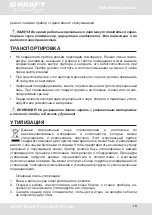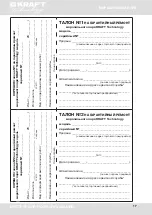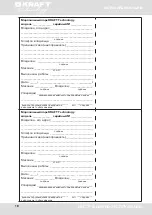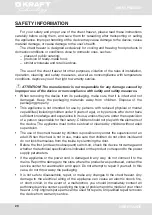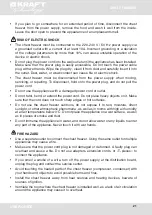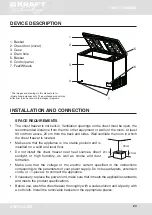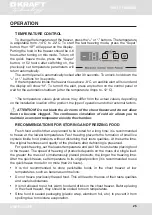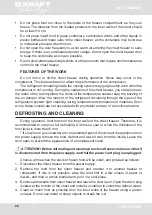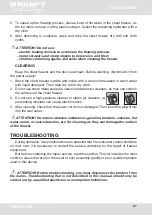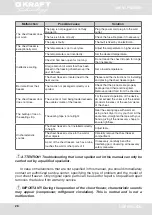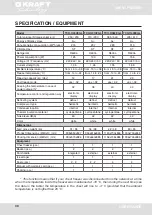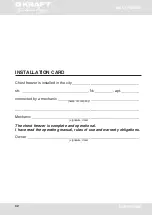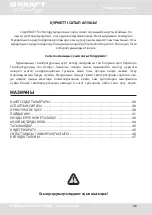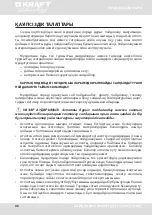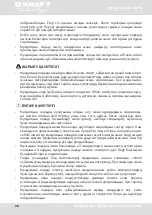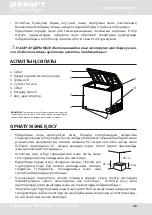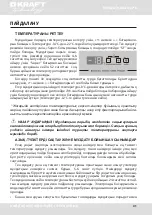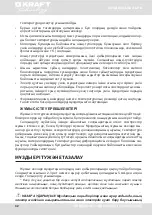
27
USER GUIDE
CHEST FREEZER
5. To speed up the thawing process, place a bowl of hot water in the chest freezer. As
the ice melts, remove it with a plastic scraper. Collect the remaining meltwater with a
dry cloth.
6. After defrosting is complete, wash and wipe the chest freezer dry with soft cloth
cloths.
ATTENTION! Do not use:
–
electric heating devices to accelerate the thawing process;
–
metal scrapers and sharp objects to remove ice and frost;
–
chlorine-containing agents and acids when cleaning the freezer.
CLEARING
Keep the chest freezer and the door seal clean. Before washing, disconnect it from
the power supply!
1. Wash the chest freezer outside and inside with a clean cloth soaked in warm water
with liquid detergent. Then wipe dry with a dry cloth.
2. Do not use sharp metal scrapers, caustic and abrasive cleaners, as they can scratch
the surfaces of the chest freezer.
3. Do not use a high-pressure cleaner or steam jet cleaners, as
penetrating moisture can cause electric shock.
4. After cleaning, check that the power cord is not damaged. Then insert the plug firmly
into the wall outlet.
ATTENTION! Do not use abrasive substances, gasoline, benzene, solvents, hot
water, metal, or coarse brushes, etc. for cleaning, as they can damage the surface
of the freezer.
TROUBLESHOOTING
During operation, if any malfunctions are detected that the consumer cannot eliminate
on their own, it is necessary to contact the service workshop for the repair of freezer
equipment.
But before contacting the repair service, read this section. This list includes the most
common cases that are not the result of poor assembly quality or poor-quality materials
used in this device.
ATTENTION! Before troubleshooting, you must disconnect the product from
the mains. Troubleshooting that is not described in this manual should only be
carried out by a qualified electrician or a competent technician.

